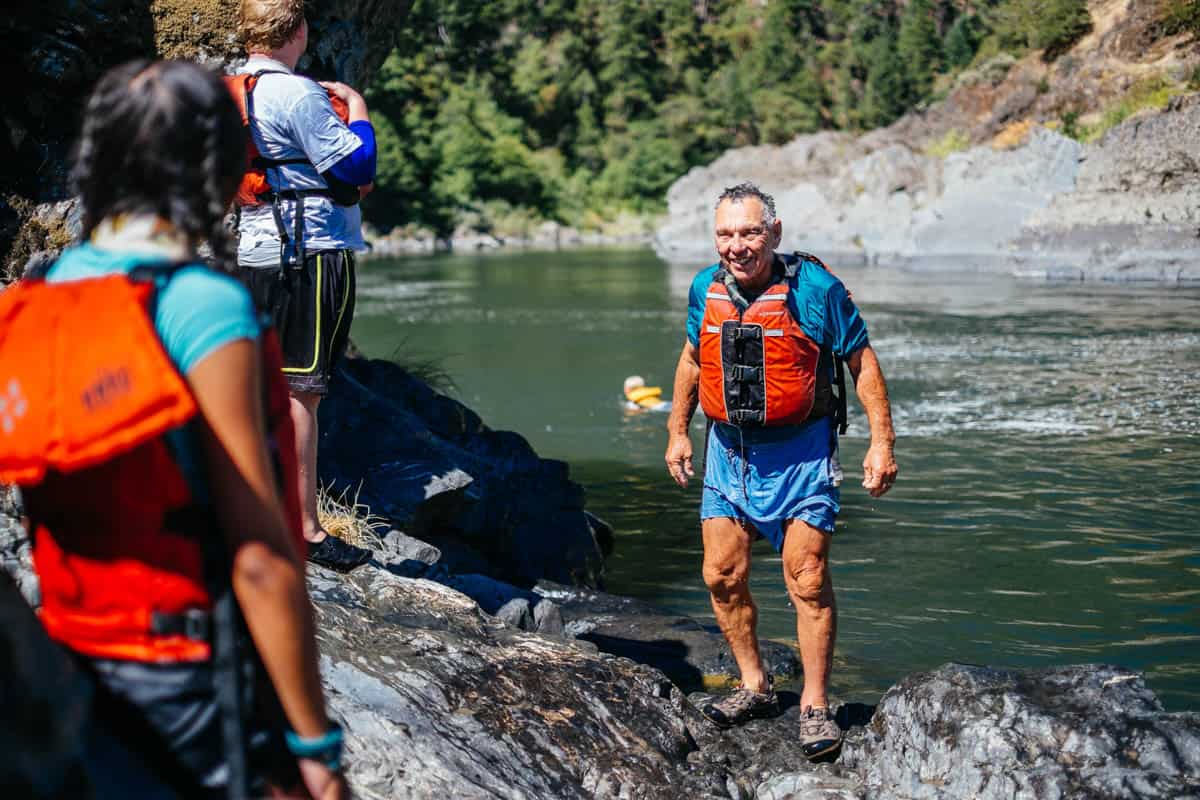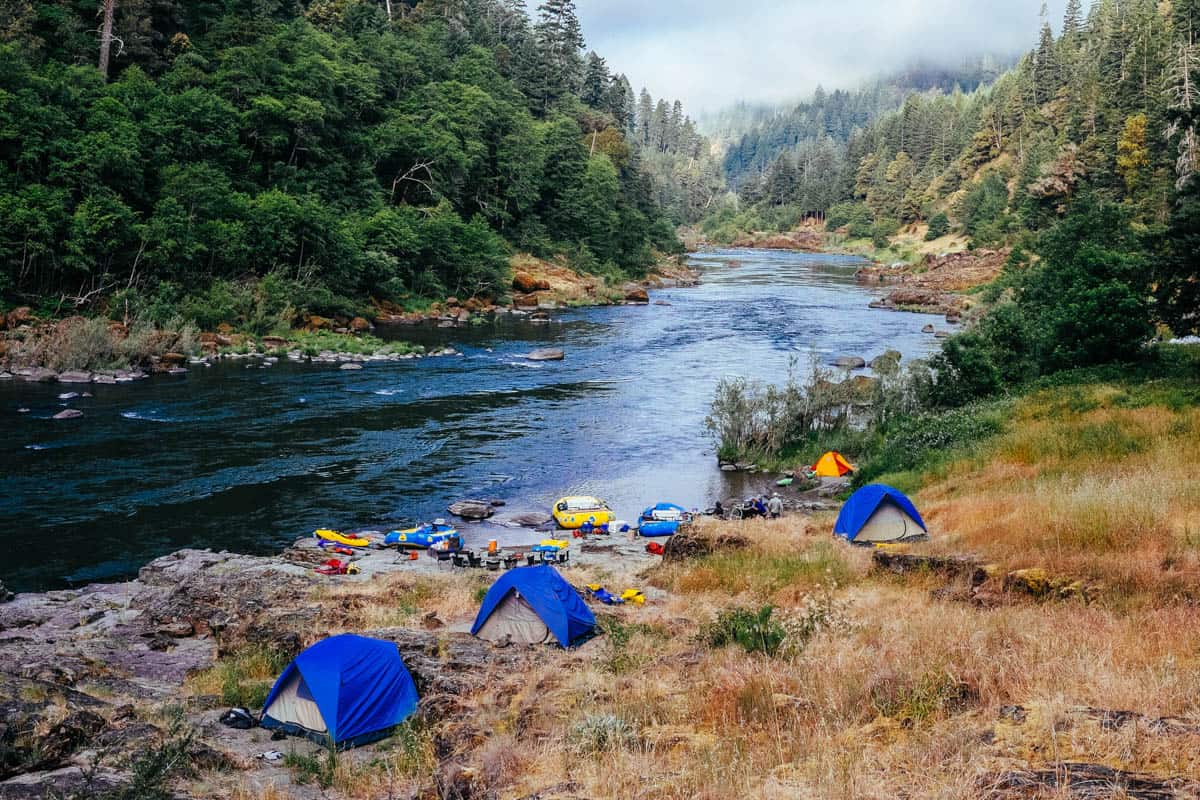We are excited that the Oregon Wildlands Act is now law. Signed by President Trump on March 12th, the bill is another step forward to increasing land and river protections throughout the state.

The Oregon Wildlands Act
The Oregon Wildlands Act was a 10 year effort introduced by Oregon Congressman Peter DeFazio as well as Oregon Senators Ron Wyden and Jeff Merkeley. The bill is part of a larger public lands package called the John D. Dingell, Jr. Conservation, Management, and Recreation Act (S. 47). For Oregon specifically, the bill includes:
- 120 miles of Wild and Scenic protections on Rogue tributaries including Kelsey, Whisky, Howard, Mule, Missouri, Jenny, and Wildcat Creeks
- Protections along the Chetco and Elk Rivers from future mining projects
- 30,000 new wilderness acres in the Devil’s Staircase

Conservation Policy Benefits the Rogue Community
Conservation oriented policy decisions enacted to protect the Rogue River result in an economic boost for the region. Counting rafting, fishing, hiking, and jet boat tours, the Rogue is responsible for at least $30 million in total economic output, including $15.4 million in personal income. Wild and scenic protections helped bring back the salmon and boosted the fishing industry. Removing Gold Hill dam benefited recreation by adding the runnable river miles. By increasing tributary protections, the Oregon Wildlands Act continues the economic momentum through conservation.
“Rivers and streams are the backbone of Oregon’s recreation economy….rural communities are going to be able to create world class recreation destinations and look at that recreation economy as an increasing opportunity to build a more secure economic future”Senator Ron Wyden
For Senator Ron Wyden, the link between conserving Oregon’s wild spaces and economic prosperity is clear. In a recent speech on the Senate floor, he observed that “rivers and streams are the backbone of Oregon’s recreation economy….rural communities are going to be able to create world class recreation destinations and look at that recreation economy as an increasing opportunity to build a more secure economic future.” Due to this bill, Oregon now has more miles of Wild and Scenic Rivers than any of the contiguous 48 states. We can count more securely on the fact that this river will be around for generations to come.
Leaving Rogue Wilderness Behind
Despite great progress this year, Congress left behind the wilderness designation protecting the top 20 miles of this amazing stretch. Rafters only enter wilderness at Mule Creek Canyon.
In December, Oregon Representative Greg Walden struck out:
- 94,700 acres of BLM land designated as a “Recreation Area” above Mule Creek Canyon, and
- 56,100 acres directly surrounding the Rogue river as wilderness (a “Wilderness Area” prevents development such as logging or mining but allows non-mechanized activities such as rafting or hiking)
Now the Rogue River is still open for logging and development. This is unfortunate, as increasing protection ensures the long term benefits for the river its surrounding communities.
Wilderness Is Important for River Health
A healthy river depends on a healthy forest. Unfortunately for the Rogue River, the Oregon Wildlands Act still falls short in protecting the forest. If logging is allowed to clear out older trees, the forest becomes vulnerable to greater wildfire intensity. Fires at this level will endanger the watershed and muddy the tributaries we have worked so hard to protect. Wildlife such as salmon, not to mention human recreation, would be driven away.

By adding a wilderness protection, Congress could prevent development once and for all. A wilderness designation provides for organized forest management, enabling fuel reduction, maintaining firefighter access and creating prevention strategies. It would also keep logging from marring the beautiful old-growth landscape that visitors enjoy at river level. While the Oregon Wildlands Act goes far to safeguard Rogue tributaries, it will be more difficult to preserve the river without protections for the land.
The Next Steps for Oregon Public Lands
Thanks to the Oregon Wildlands Act we can enjoy new wilderness areas, additional wild and scenic river miles, and maintain clean drinking water. In the coming years, areas around the Rogue river, the Owyhee river, and the tributaries in the South Kalmiopsis still deserve support. They also represent Oregon’s recreational value, amazing beauty, and unique biodiversity.
As you plan for your next river trip, please add river advocacy to your to do list by contacting your congress member. Congratulate your Senator for protecting public lands. Remind them that there is still more to do around the Rogue, Owyhee, and South Kalmiopsis.

